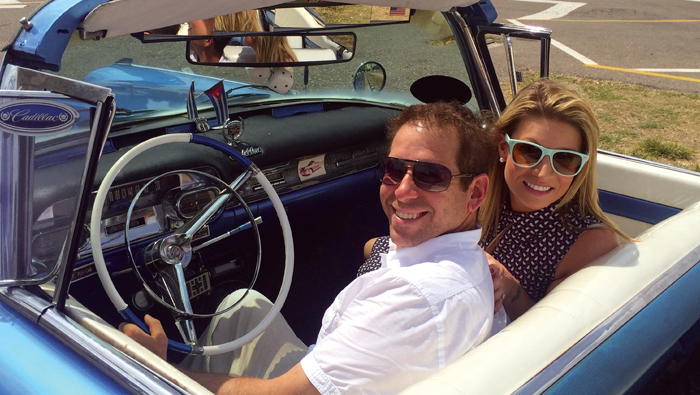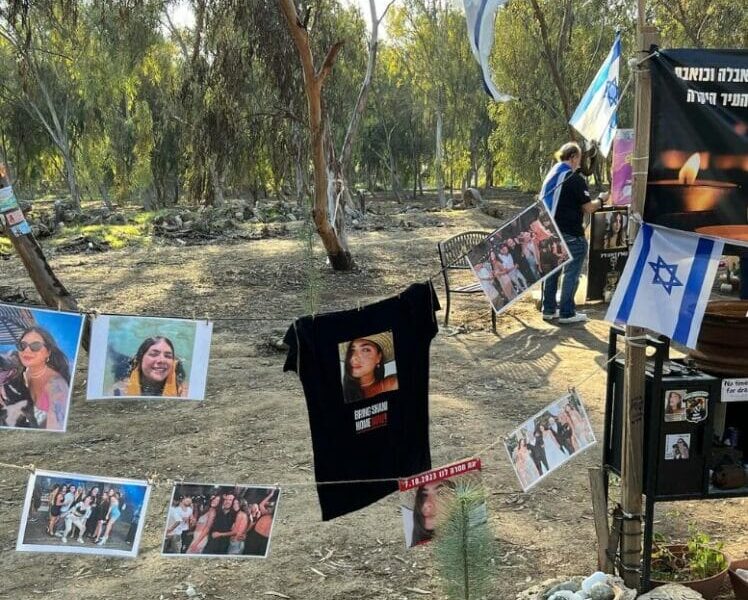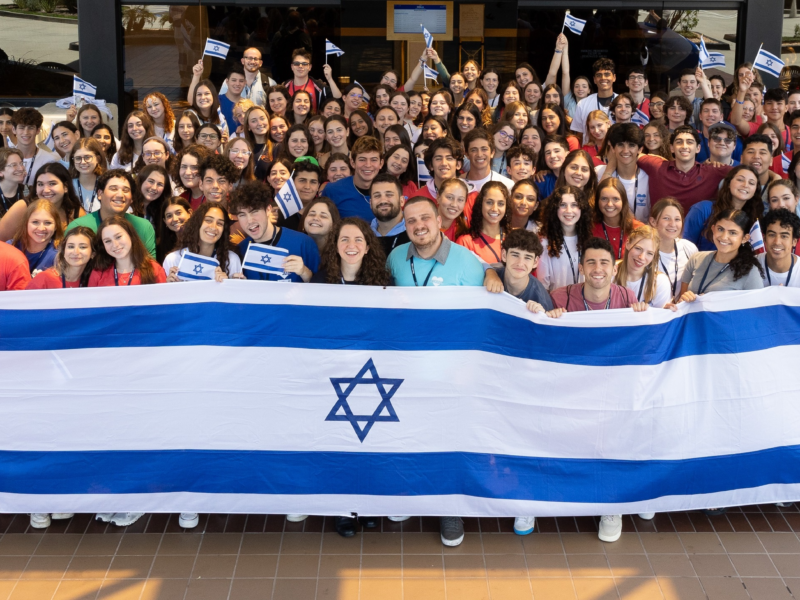Photo courtesy Craig Thomas
Craig Thomas and Jenna Lee, newlyweds who are both anchors for KOLD 13 Tucson News Now, recently honeymooned in Cuba. While exploring the island, they chose to spend Shabbat morning at Temple Beth Shalom (Templo Beth-Shalom Gran Sinagoga de la Comunidad Hebrea de Cuba), also known as Beth Shalom Grand Synagogue.
“To think that there’s a Jewish community there is amazing and inspiring,” says Craig, who sees its existence as part of the Jewish people’s history of resilience. “The fact that such a tough group of people just refuse to slink off.”
According to Jewish Virtual Library (jewishvirtuallibrary.org/jsource/vjw/Cuba.html), Havana has the largest Jewish community in Cuba. At its peak, 75% of Cuba’s 12,000 Jews lived in Havana, which had five synagogues, a kosher restaurant, one Jewish high school and five Jewish elementary schools.
Today, Temple Beth Shalom is one of three remaining synagogues in the capital, where 85% of Cuba’s estimated 1,500 Jews live. Built in 1952 in the Vedado neighborhood of downtown Havana, it is affiliated with the Conservative movement and is considered the headquarters of the Jewish community. There is also an Orthodox synagogue and a Sephardic congregation, which Craig says houses a Holocaust memorial.
Craig says he had emailed the congregation before his trip to ask if he could attend services and was told they were welcome. He says there were about 50 people at services that Saturday morning and it wasn’t clear who was leading. “There was a guy up there who I thought was the rabbi. And there were some women up there, too, and another guy – it was kind of a potpourri of people up and around,” says Craig. As the Torah service began, the man who Craig thought might be the rabbi invited him to the bimah to help with the Torah service. Craig asked him how long he had been the rabbi of the congregation and he answered, “Me, rabbi? No, no, no. We don’t have a rabbi.”
To his surprise, Craig discovered that there was not a single rabbi in the country. “Just think about that. They’ve survived without even having a leader. From what we were told, religion was banned for 45 years. Things became a little more relaxed in the 1990s, in general. And the outright ban on religion was lessened,” he says. “So then it was out of the shadows, but two generations of would-be religious people were gone. Many Cuban Jews … just got out. That whole crew – the ages that you would think would be the leaders – they don’t exist. Yet, the congregation still exists. There are very old people, who were there probably before the revolution or just towards the end of the revolution, and now there are these younger, 20-somethings, who are starting to want to be Jewish and help lead the congregation.
“I was impressed just to think of how everyone must take some ownership when there’s no leader. When there’s no rabbi, you’re kind of on your own and you have to figure it out. There’s no coach, or whatever analogy you want to make. I can’t imagine an American synagogue without a rabbi.”
Craig was also struck by the familiarity of the service, although some of the tunes were different and half of the service was in Spanish, “it was the same service that I’ve gone to for 35 years. That’s reassuring, to think yes, I know this, I’m comfortable here. It was a very memorable and very interesting experience.”
Craig and Jenna returned later to visit the Jewish library, which is also housed at Temple Beth Shalom. It was interesting to see so many books in Hebrew and Spanish, rather than Hebrew and English, as Craig was used to. “It’s inspiring that it has survived. There’s not the anti-Semitism that there was in Russia or other places where they singled out Jews, but just the fact that it’s a Jewish community that has survived was amazing.”
And it’s surviving despite the economic hardships that he witnessed in Cuba. “There is no upper-middle class in Cuba. … Much of the funding for the synagogue comes from Canada. … The country’s economics are still wacky. One of the cab drivers that we had went to engineering school. I asked him, ‘Why are you a cab driver?’ He said, ‘I make more money as a cab driver then I did as an engineer working for the government.”
Back in Tucson, Craig says that he’s taken an interest in the future of Temple Beth Shalom, in helping that dedicated handful of Jews keep the congregation alive.
For more of Craig’s impressions and photographs from Cuba, visit tucsonnewsnow.com/story/31594528/reporter-notebook-a-look-inside-cuban.






